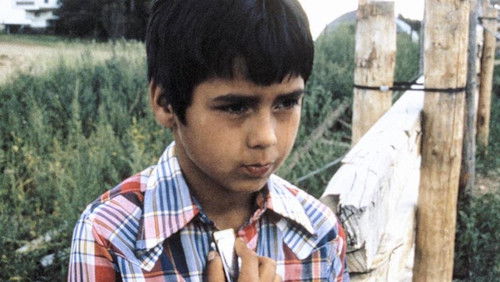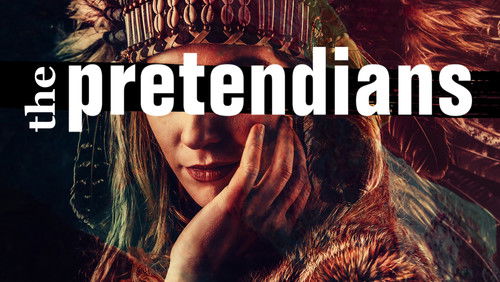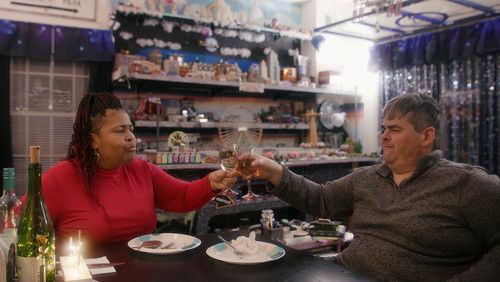Industrial Light & Magic: Creating the Impossible (TV Movie 2010)
67KIndustrial Light & Magic: Creating the Impossible (TV Movie 2010). 1h | TV-PG
“Some of the biggest names in Hollywood are interviewed for this u0026quot;documentaryu0026quot;, along with some of the worldu0026#39;s most talented special effects people. What these people do for a living is literary creating the impossible! The director of this film had access to behind-the-scenes shots of almost every big special effects movie to come out the last 30 years, every one of which could be (and has become) a fantastic documentary about special effects on its own. The ingenious solutions these people come up with, are better than the best of magic tricks. And I will never get tired of learning how this magic is done, or how these people make a living.u003cbr/u003eu003cbr/u003eBut all that is barely mentioned in Industrial Light u0026amp; Magic: Creating the Impossible.u003cbr/u003eu003cbr/u003eInstead we get about an hour of people sitting around talking about how great they are. The ILM people love George Lucas, Lucas loves the ILM people, Spielberg loves Lucas and ILM, ILM and Lucas loves Spielberg, and so on and so on. The only good parts are when Robin Williams adds a bit of humor to all the talk, even though his anecdotes have little or nothing to do with ILM.u003cbr/u003eu003cbr/u003eAll of them talk about one breakthrough after the other, scientific progress, artistic freedom and u0026quot;the CGI renaissanceu0026quot; of the industry. But we barely get to know what any of these breakthroughs actually were. Just when you think theyu0026#39;re going to explain some of the nitty gritty details about how some of these effects were achieved, what were their problems, why, and how did they solve them, the film is cut to another person talking about how great the last person was for coming up with a solution. We never get to know what any of these solutions were. They never explain the techniques which goes into creating any of the effects they talk about, other than extremely superficial stuff like: u0026quot;More than 10.000 moving parts were in this shot..u0026quot;, u0026quot;This was difficult because of the camera movement…u0026quot; or u0026quot;This had never been done before.u0026quot; But how did the manage to animate more than 10.000 moving parts? How do they track the camera movements? How did they manage to do something that had never been done before? This film certainly doesnu0026#39;t tell you.u003cbr/u003eu003cbr/u003eAlso, thereu0026#39;s never any mention of the substantial lowering of quality that weu0026#39;ve had to endure in big special effects movies, since the dawn of CGI. Yet itu0026#39;s common knowledge that sci-fi, action and horror movies have taken a big step down from the greatness that was achieved in the 70, 80 and 90s. u0026quot;Directors are allowed absolute freedom nowu0026quot; they all say, but nobody asks if that is actually a good thing. Good screen writing, captivating characters and creative solutions to limited resources have taken a back seat to big explosions and impossible movements through fake landscapes. This is never more obvious than when comparing Lucasu0026#39;s original Star Wars trilogy to his newer crapfest. When one animator in Creating the Impossible barely mentioned that the character Jar-Jar Binks might not be very well liked, I got my hopes up… This would be interesting, I thought. How will he justify such an atrocity put to life on screen? Instead of going any further with it, he just continues to talk about how great it was that they made him look real (even though they didnu0026#39;t).u003cbr/u003eu003cbr/u003eBecause even as good as CGI have gotten today, thereu0026#39;s nobody in Creating the Impossible who shouts out u0026quot;IT DOESNu0026#39;T LOOK REAL!u0026quot; (like we did when we saw this u0026quot;docuu0026quot;) And why doesnu0026#39;t it look real? Because we know itu0026#39;s generated on a computer. And as any illusionist will tell you: Creating a good illusion is not so much about doing fancy stuff with your hands, as it is about tricking the minds of the audience into making them believe what theyu0026#39;re seeing is real. This is why models, miniatures and stop-motion animation will ALWAYS look better than CGI. Because it really is real. Thereu0026#39;s actually something there.u003cbr/u003eu003cbr/u003eIronically enough, thereu0026#39;s nothing there in this bottom of the barrel circle-jerk, but I guess thatu0026#39;s not too surprising, coming from the same people who made equally nonsensical u0026quot;The Pixar Story.u0026quot;”









